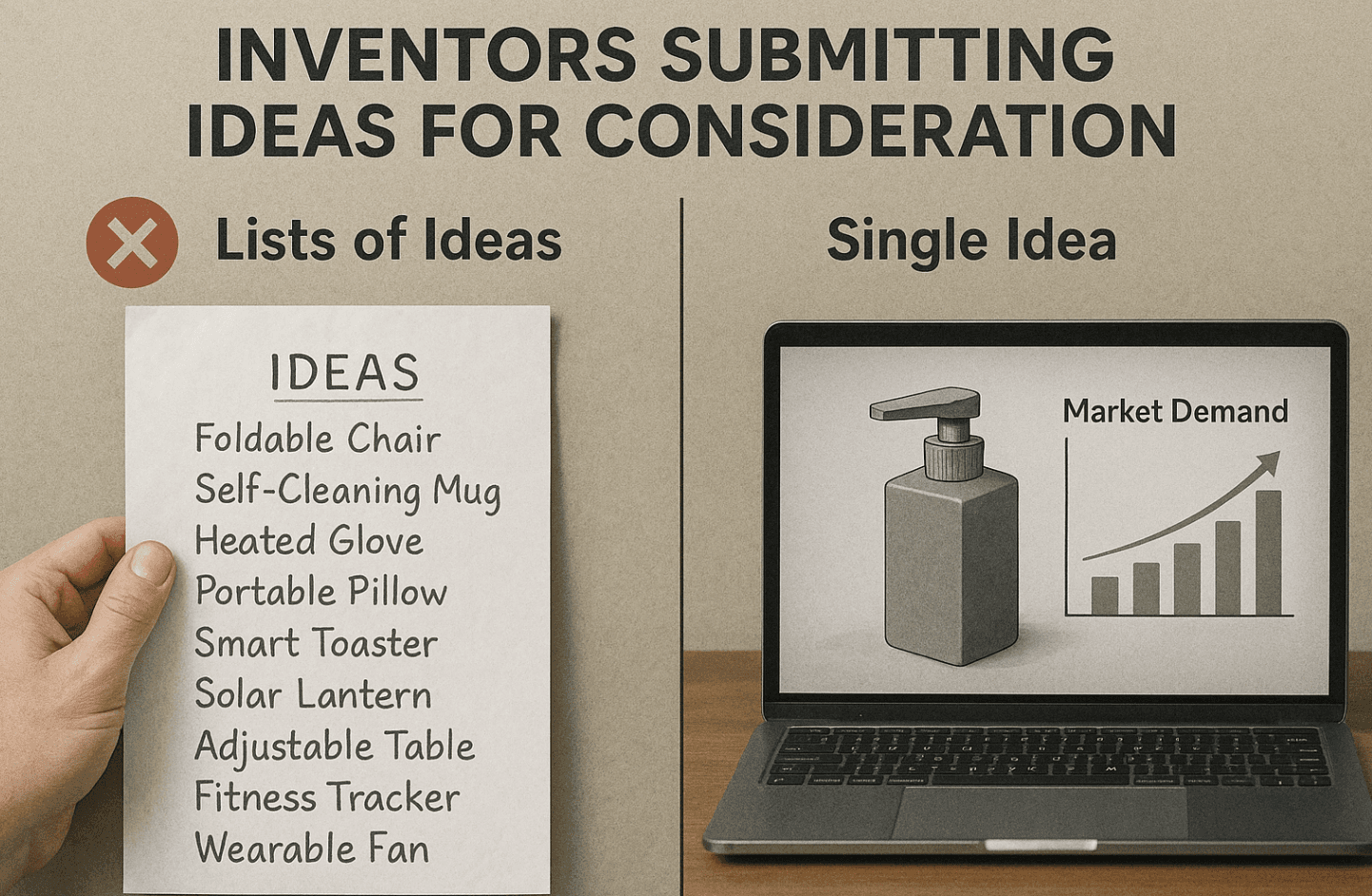Submitting Invention Ideas: Why One Well-Prepared Idea Beats a Dozen Half-Baked Ones

When it comes to getting your invention in front of the right eyes—whether it's a potential licensee, a manufacturer, or an investor—less is often more. Submitting a laundry list of ideas might seem like a way to show your creativity and versatility, but in reality, it often has the opposite effect. It suggests a lack of commitment, polish, and market understanding.
To make your submission stand out and be taken seriously, focus on one strong idea—and support it with the materials that demonstrate you've done your homework.
Why Lists of Ideas Fall Flat
Think of it from the reviewer’s perspective. They’re not looking for a brainstorm session. They’re looking for a product they can take to market. A long list of undeveloped ideas screams “I haven’t truly thought this through.” Worse, it places the burden of evaluation and development on the reviewer—something few companies have the time or resources to take on.
On the other hand, a single, well-developed concept says: “I’m serious, I believe in this idea, and I’ve done the work to prove it’s viable.”
What Makes a Submission Stand Out?
Here’s what to include in your submission if you want to be taken seriously:
1. A Working Prototype
Even a rough working model speaks volumes. It shows that your concept is more than just a sketch—it’s a real solution that can be tested, improved, and eventually manufactured. It doesn’t have to be pretty, but it should demonstrate the core functionality of your idea.
Tip: If you don’t have physical prototyping skills, consider working with a prototyping service or freelance engineer to bring your idea to life.
2. A Short Video or Sales Sheet
You need to tell the story quickly and clearly. A 60–90 second video or a one-page sales sheet should explain:
-
The problem your invention solves
-
How it works
-
Its key features
-
The main benefits to the user
Keep it focused on what matters to potential licensees or buyers: what makes this product valuable and different?
Bonus: A compelling visual pitch also helps your idea spread internally—companies are far more likely to forward a short, professional video than a wall of text.
3. Market Interest Evidence (Like Survey Data)
Market validation is critical. If you’ve run a survey or collected data showing that people want your product, that’s gold. Even a simple Google Form survey with 100 responses can add credibility, especially if the results show strong demand or solve a pain point.
Other options include:
-
Interviews with potential customers
-
Feedback from trade professionals
-
Early crowdfunding interest or waitlist signups
Important: Include actual numbers and testimonials where possible. “People liked it” means little. “86% of 120 respondents said they’d buy this product at a $29.99 price point” means a lot.
4. Follow Invention Submission Rules (At First)
When a company offers a specific process for submitting inventions, read through the process before submitting. Be sure to read the confidentiality agreement, also known as a CA or NDA - some company agreements are terrible. If you are ok with the terms, follow the rules... at least at first. If you don't get a response in the promised time frame, try to find a direct contact at the company and make a pitch to them.
Final Thoughts
Getting your invention in front of decision-makers is hard enough. Don’t dilute your impact by throwing a dozen undeveloped ideas at the wall and hoping one sticks. Instead, do the work to make one idea impossible to ignore.
Show them you’re not just an idea person—you’re a problem-solver with a solution that’s ready for the next step.
Invention City is always looking for great inventon ideas. You can submit for free here.
share this article: facebook